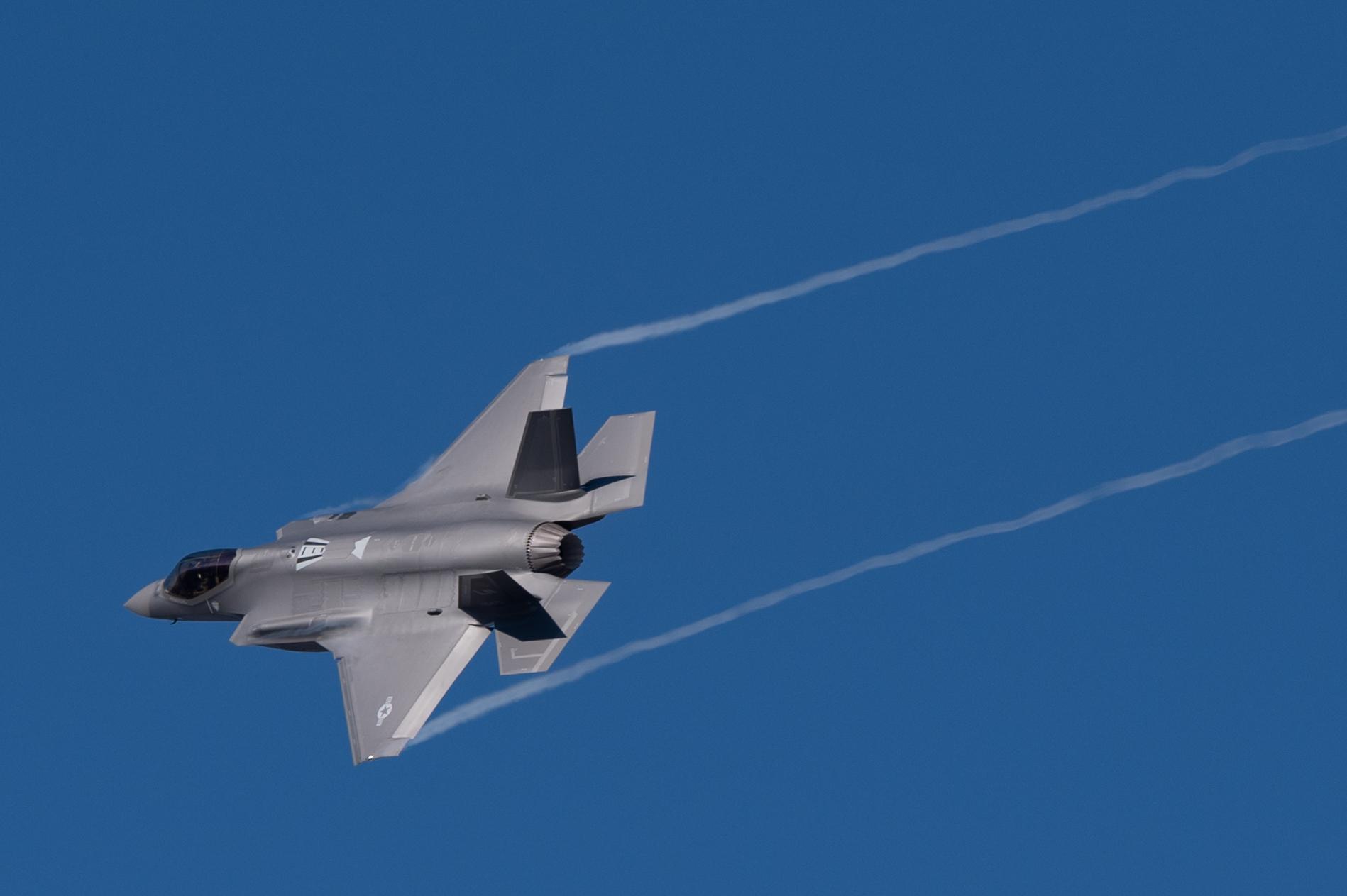
A U.S. Air Force F-35A flies over Siauliai Air Base, Lithuania as part of NATO air policing mission.
SANTA MONICA, California—The commander of U.S. Air Forces in Europe-Air Forces Africa (USAFE-AFAFRICA) during the opening months of Russia’s invasion of Ukraine has outlined some of the vital lessons learned since the conflict began.
Gen. Jeffrey Harrigian, who retired from the U.S. Air Force in July, reflected on the war, NATO and U.S. support for Kyiv in a panel session at think tank RAND Corporation’s West Coast Aerospace Forum on Dec. 2.
He said NATO spent a lot of effort coordinating, planning and sharing information between the air forces of its 30 member states in advance of the invasion, which Moscow launched on Feb. 24.
“On night one, when the Russians invaded, we had five [combat air patrols] filled, watching every move so they didn’t penetrate the NATO border,” Harrigian said. “The air component was the only one there right on the border, from the Baltics, all the way down to Romania.”
“To have that, and just have that deterrence in position, postured properly on Night One was a big deal,” he said. “We did that for several weeks, before we then started to throttle back.”
Aligning the militaries of 30 different countries required a lot of data sharing and conversations between air chiefs, he said.
“What weapons did my NATO partners have? Because if the shooting started, operationally that was going to drive the way we were going to execute,” Harrigian said.
Figuring out how to share air tasking orders and rules of engagement was also critical, especially as NATO air forces were at one point operating from 33 different locations.
“How do you make sure the U.S. rules of engagement are the same as everyone else’s because you’re operating under different authorities?” Harrigian said. “My biggest fear was that we were going to shoot and then the shooting was going to start.”
Once the shooting did start—between Russia and Ukraine—Moscow made a major mistake early on.
“Air superiority… that’s job one, and they didn’t get it,” Harrigian said. “If you watched what happened, they had airplanes get shot down, the Ukrainians got into their head and then they would go no further than the frontline of their troops.”
Harrigian, who was commander of U.S. Air Forces Central Command between 2016 and 2018, said the weaknesses he observed in Russian air power during the Syrian civil war showed up again in Ukraine.
“They can generate a fair number of sorties, but it was basically a script. They get the target, fly, drop, go home,” Harrigian said. “I can tell you stories about running intercepts on Russians, and they had absolutely no [situational awareness].”
The Russian Air Force lacked the ability to do dynamic targeting—hitting unexpected targets of opportunity.
“The other part I saw in Syria, they had very little capability to do air-ground integration,” Harrigian said. “None, in my opinion.”
The U.S. sought to make the problem more difficult for them by teaching the Ukrainian ground forces new shoot-and-scoot tactics.
“It’s easy to hit a building, they can do that. But when you’re trying to go after SA-10s or SA-11s [surface-to-air missile systems] there’s a problem set there, that if you’re good at it, and then throw some decoys, it’s a lot harder,” Harrigian said, without elaborating on the types of decoys.
Once the war in Ukraine kicked off, NATO air forces watched from a distance.
“I fought hard just to get two [combat air patrols] of MQ-9s, one in the Black Sea and one off Kaliningrad. The Russians hated them because they were persistent,” Harrigian said. “They could sit off the coasts for 12-15 miles, and they always knew they were there.”
The U.S. Air Force had to back off from using “big wing” intelligence, surveillance and reconnaissance (ISR) aircraft, such as the RC-135 Rivet Joint and the E-8C Joint Surveillance Target Attack Radar System (J-STARS), he said.
“We didn’t want to pick a fight,” Harrigian said. “The area that was probably the most contested was the Black Sea. We would get in the Black Sea, the Russians would come on guard and say: ‘Hey, get your airplanes out of there or we’re gonna shoot you down.’”
The air force chose to back down, even though its aircraft were flying over international waters, judging that it was not worth a melee, Harrigian said.
Instead, the service operated Rivet Joint and J-Stars from NATO air space, such as above nearby Romania, attempting to backfill intelligence with Earth observation and electronics signals intelligence from U.S. Space Force satellites, Harrigian said.
“The idea was to take that satellite data and then quickly turn that into tactical information,” he said. Getting priority access to the satellites, which provide global coverage for the Pentagon, as well as quickly passing along data, was challenging at times, Harrigian noted.
“We still have work to do,” Harrigian said. “But it was a good opportunity to work through the process and see how timely we could actually deliver it to the warfighter.”
Having more satellites aloft is shortening the time between data collection—what’s known as the revisit rate—and that’s helping make the platforms more useful to combatants on the ground, he added.
In general, the service was able to piece together what was going on by using dispersed ISR assets. “Good example: when we got the F-35s in Poland there was some good collect,” Harrigian said. “I’ll just leave it at that.”



